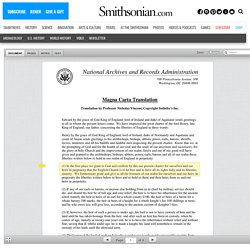

Essential Guide to the EU – Preface. This Guide is intended for anyone who wonders how our Universe really works, and who might be interested in an intriguing and somewhat different point of view.

Is the Universe now expanding faster and faster as science magazines tell us? Does gravity alone, the weaker of the two long-range forces and the centerpiece of the Standard Model in astrophysics, rule the heavens? A small star grouping, NGC 265, in the Small Magellanic Cloud, near our Milky Way galaxy. Image credit: European Space Agency and NASA/Hubble Readers may be surprised to discover that many well-trained skeptics do not support popular ideas in astronomy and the space sciences. Enchanted by the role of gravity in the cosmos, astronomers failed to recognize the pervasive role of charged particles and electric currents in space. The purpose of this Guide is to introduce and clarify the roles of plasma and electricity in space.
We offer the Essential Guide to scientists and to the interested lay reader. Basic Chaos and Fractals Intro. Simple Iterative Fractals The geometry of Fractals lies somewhere between dimensions.

To be totally accurate "fractal" is even not a 'thing' at all but more like a unit of measure or mathematical characteristic. For example each fractal has a 'fractal dimension' which is it's degree of regularity and repetition. CANTOR SET: One very simple way to understand fractals and the meaning of "iteration" is to examine a simple recursive operation that produces a fractal pattern known as Cantor Set. you take a line of arbitrary length and remove the middle third. this is the first step or "Iteration", then take the remaining two lines and repeat the clipping procedure.
Eventually after 5 or 10 iterations you have dozens of tiny lines which take up only as much room as the two original ones from the first step. From Wikipedia "The Cantor set, introduced by German mathematician Georg Cantor, is a remarkable construction involving only the real numbers between zero and one. Council tax, tax, PCN, parking fines, census, sovereign, common law, commercial lien, constitution. Document Deep Dive: What Does the Magna Carta Really Say? Last month, the 1297 Magna Carta, a prized artifact at the National Archives in Washington, D.C., returned to view after ten months of conservation work.

With funds from the document’s owner David M. Rubenstein, conservators at the archives used ultra-violet photography to reveal text that was lost to the naked eye due to water damage. They also removed old repairs and adhesives that were causing the document to contract, humidified and flattened the parchment and placed it in a high-tech case filled with inert argon gas, all to ensure that it is preserved long into the future. “We have every reason to believe that 800 years from now it will be in fabulous shape,” said Kitty Nicholson, deputy director of the National Archives Conservation Lab. It was nearly 800 years ago, after all, on June 15, 1215, that a group of noblemen presented the first version of Magna Carta to King John at Runnymede, just over 20 miles west of London on the River Thames.
Children in the Roman Empire. Peter Thonemann Christian LaesCHILDREN IN THE ROMAN EMPIREOutsiders within350pp.

Cambridge University Press. £65.978 0 521 89746 4 Véronique Dasen and Thomas Späth, editorsCHILDREN, MEMORY, AND FAMILY IDENTITY IN ROMAN CULTURE392pp. Oxford University Press. £70 (US $125).978 0 19 958257 0 Published: 12 October 2011 A Roman relief, second century AD; Ostia, Italy Photograph: The Art Archive T here is remarkably little good poetry about very small children. It comes, then, as a rude shock to discover that the baby was not Statius’s son, but his slave.
Adult–child relationships in past societies present painful and delicate problems for the historian. The Romans were simply not interested in what we would now call child development In his superb Children in the Roman Empire, first published in Dutch in 2006, Christian Laes argues that we have a lot of modern baggage to chuck overboard. Instead, Laes suggests, Roman childhood should be understood as a social category.
Cullen Murphy - Inside the heresy files. On a hot autumn day in Rome not long ago, I crossed the vast expanse of St Peter’s Square, paused momentarily in the shade beneath a curving flank of Bernini’s colonnade and continued a little way beyond to a Swiss Guard standing impassively at a wrought-iron gate.

He examined my credentials, handed them back and saluted smartly. I hadn’t expected the gesture and almost returned the salute instinctively, but then realised it was intended for a cardinal waddling into the Vatican from behind me. Just inside the gate, at Piazza del Sant’Uffizio 11, stands a Renaissance palazzo with a ruddy ochre-and-cream complexion.